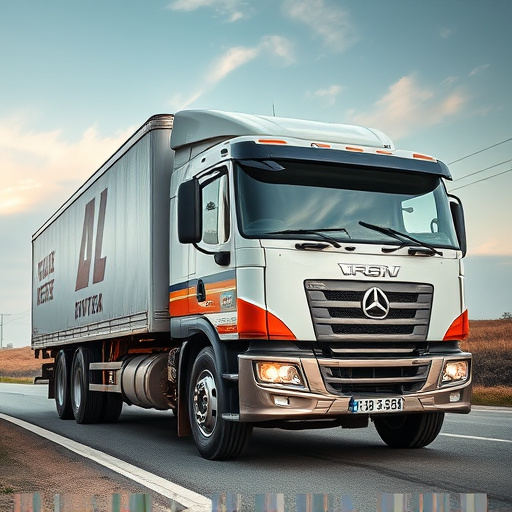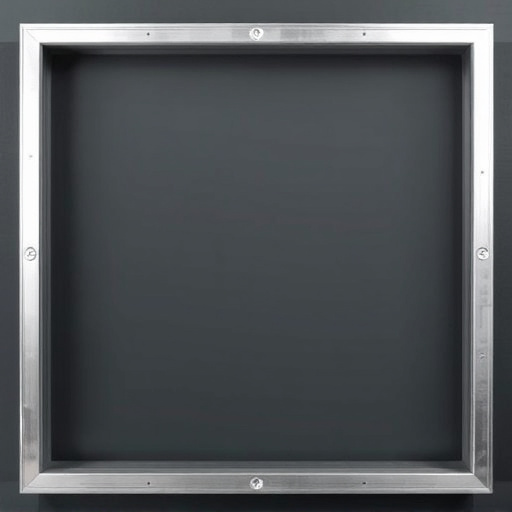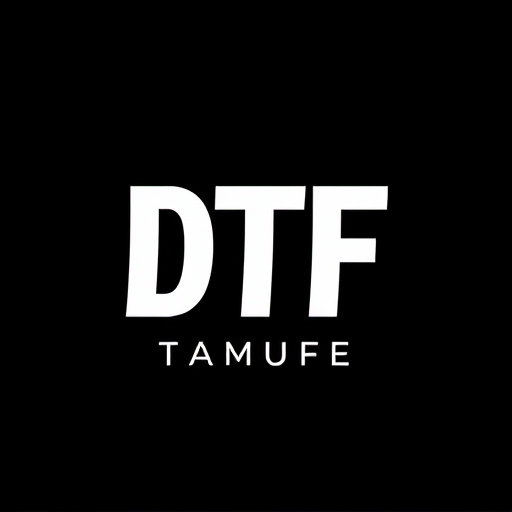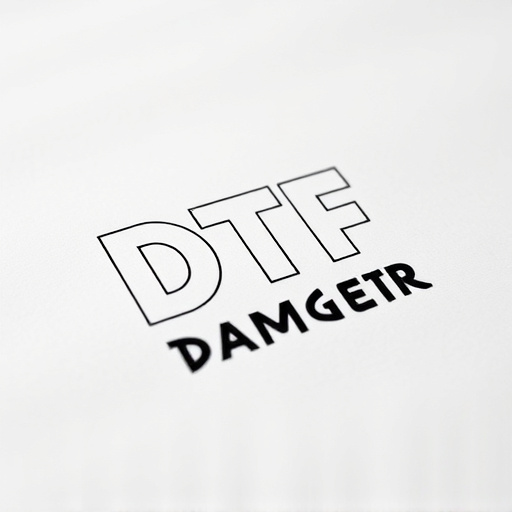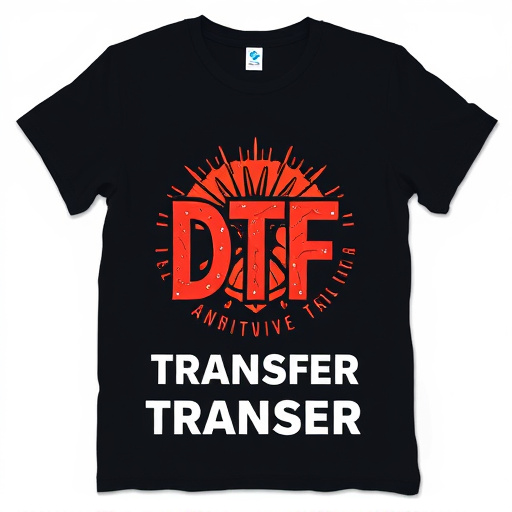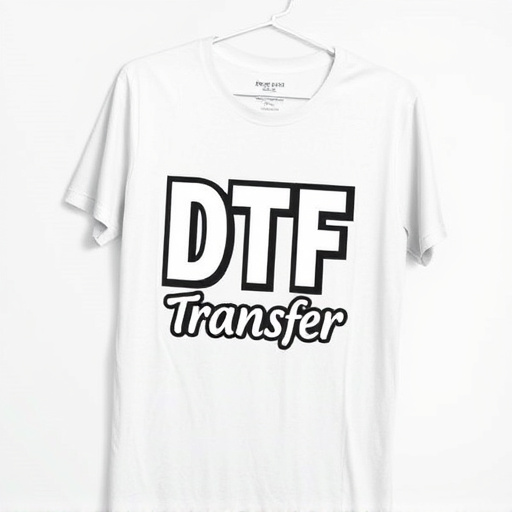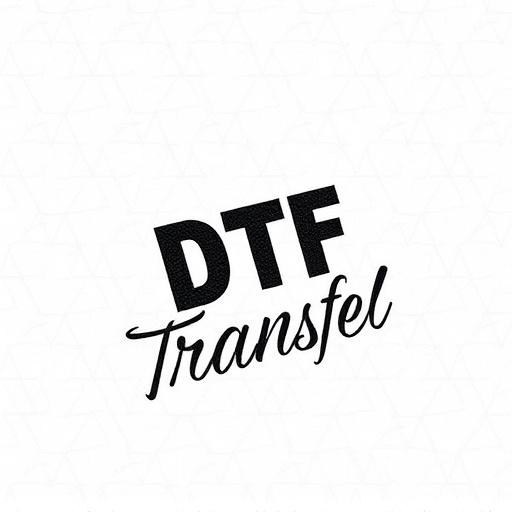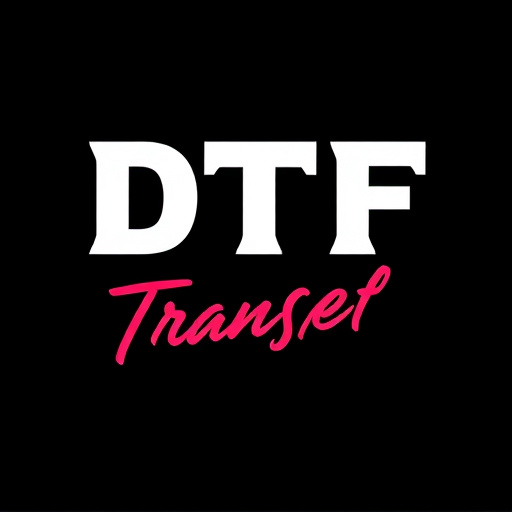Direct-to-Film (DTF) transfers are a cutting-edge printing technology offering unparalleled precision and vibrancy for intricate designs. Using specialized inks that bond strongly with substrates, DTF provides fast drying times and creative freedom with a wide range of colors, finishes, and effects. Ideal for bold graphics, photographic images, and textured surfaces, DTF is suitable for fashion, signage, automotive customization, and more. It streamlines the printing process, eliminating complex setup and enabling high-volume production with consistent quality. Compared to Heat Transfer Vinyl (HTV), DTF excels in speed and detail for large orders, while HTV offers versatility for smaller runs and diverse materials. Both methods cater to specific business needs, with DTF suitable for high-turnaround, professional merchandise and signage, while HTV is more affordable and versatile for custom pieces.
In the realm of custom printing, Direct-to-Film (DTF) transfers and heat transfer vinyl are two distinct options. This article delves into the contrasting worlds of DTF and heat transfer vinyl, offering a comprehensive overview for business owners seeking the right printing method. From understanding the DTF process to exploring its advantages in various industries, we’ll guide you through the key differences, helping you choose between these innovative printing technologies. Discover why DTF transfers and their unique capabilities might be the game-changer your business needs.
- Understanding Direct-to-Film (DTF) Transfers: A Comprehensive Overview
- The Heat Transfer Vinyl Process: How It Works and Its Applications
- Key Differences Between DTF Transfers and Heat Transfer Vinyl
- Advantages of Direct-to-Film Transfers for Custom Printers
- Choosing the Right Option: Considerations for Business Owners
- Case Studies: Successful Implementations of DTF Printing in Various Industries
Understanding Direct-to-Film (DTF) Transfers: A Comprehensive Overview
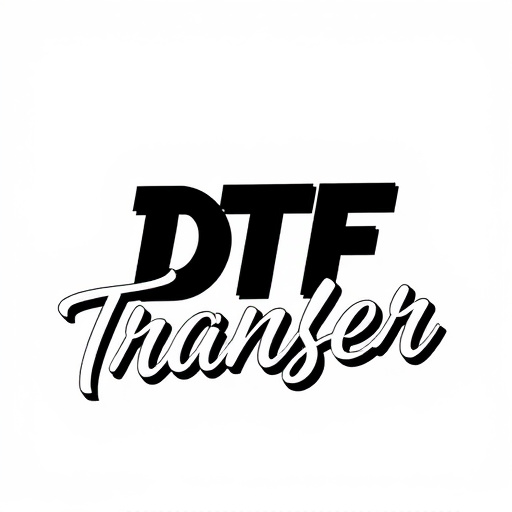
Direct-to-Film (DTF) transfers represent a cutting-edge method in the world of printing and design. This innovative process involves applying ink directly onto film, which is then transferred to a variety of surfaces, including textiles, plastics, and even metal. DTF Printing offers unparalleled precision and vibrancy, making it ideal for creating intricate designs and detailed prints. The technology utilizes specialized inks that bond strongly with the substrate, ensuring durability and fast drying times. This makes DTF Transfers a preferred choice for both commercial and personal projects, from custom apparel to promotional items.
DTF provides an extensive range of options in terms of ink colors, finishes, and effects, allowing for creative freedom. It’s particularly advantageous for creating bold graphics, photographic images, and even texturing surfaces. The direct application method eliminates the need for complex setup processes, making it a swift and efficient solution for on-demand printing. Moreover, DTF Transfers are versatile; they can be used on various materials, catering to diverse applications in industries such as fashion, signage, and automotive customization.
The Heat Transfer Vinyl Process: How It Works and Its Applications
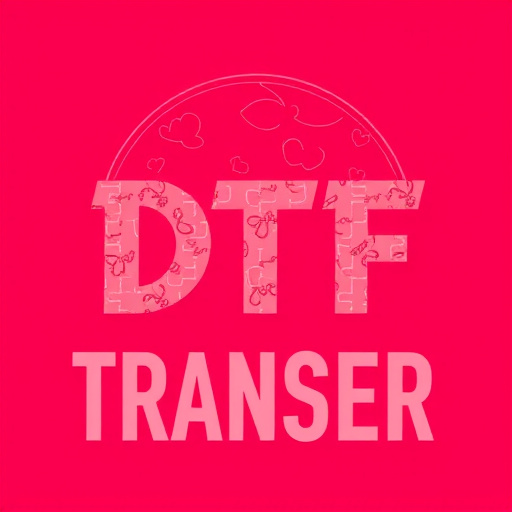
The Heat Transfer Vinyl (HTV) process involves applying heat and pressure to transfer a design from a carrier sheet to a fabric or other material. This method is widely used in DTF printing, enabling the creation of custom prints on various surfaces, including clothing, accessories, and promotional items. The versatility of HTV allows for intricate designs with vibrant colors and soft handfeel, making it a popular choice among artists, designers, and businesses.
DTF transfers offer numerous applications beyond clothing customization. They can be used to adorn home decor items like mugs, phone cases, and wall art. Additionally, HTV is well-suited for small batch production runs or one-off projects due to its accessibility and cost-effectiveness. By using heat presses, professionals can achieve high-quality prints that are durable and resistant to fading, ensuring long-lasting DTF prints on a wide range of materials.
Key Differences Between DTF Transfers and Heat Transfer Vinyl
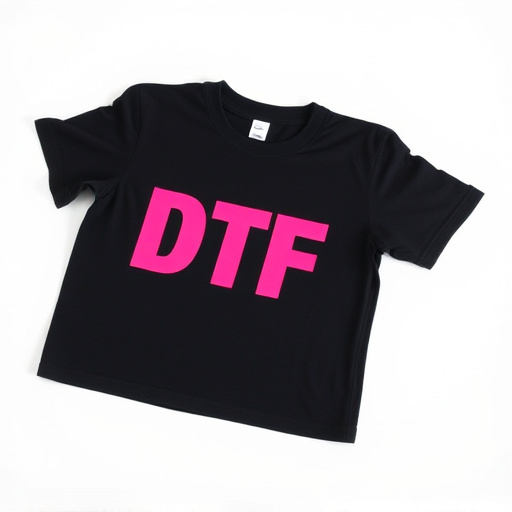
Direct-to-film (DTF) transfers and heat transfer vinyl are two distinct methods for applying graphics and designs to various surfaces, each with its own set of advantages and limitations. The primary difference lies in their production processes and the types of materials used. DTF transfers involve printing directly onto a clear film, which is then applied to the desired substrate using heat and pressure. This method offers excellent color vibrancy and detail reproduction, making it ideal for high-quality prints on materials like cotton and polyester. On the other hand, heat transfer vinyl (HTV) is a flexible material that is printed with designs and then heated to fuse it onto fabrics or other surfaces.
While DTF transfers excel in delivering crisp images and vibrant colors, they might not be as durable as HTV. Heat transfer vinyl provides a more long-lasting solution, especially for items subjected to frequent washing or outdoor exposure. Additionally, HTV allows for a wider range of material compatibility, including synthetic fabrics and hard surfaces, making it versatile for various applications. DTF printing, however, is generally faster and easier to set up, appealing to small businesses and hobbyists looking for quick results without the need for complex equipment.
Advantages of Direct-to-Film Transfers for Custom Printers
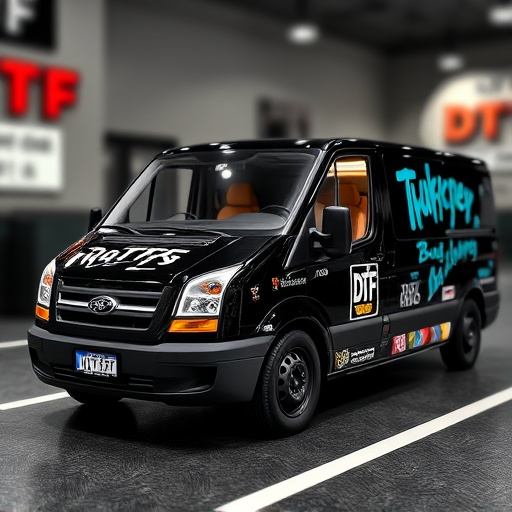
Direct-to-film (DTF) transfers offer several advantages for custom printers looking to enhance their offerings. One of the key benefits is the speed and efficiency it brings to the printing process. With DTF, designs are transferred directly onto film, eliminating the need for intermediate steps like cutting or weeding. This streamlined approach significantly reduces production time, making it an attractive option for printers with tight deadlines.
Additionally, DTF transfers provide superior print quality, especially for intricate designs and fine details. The direct application to the substrate ensures a crisp and precise image, resulting in high-quality DTF prints. This technology is particularly advantageous for custom printers catering to businesses seeking professional and visually appealing merchandise, signage, or packaging solutions.
Choosing the Right Option: Considerations for Business Owners
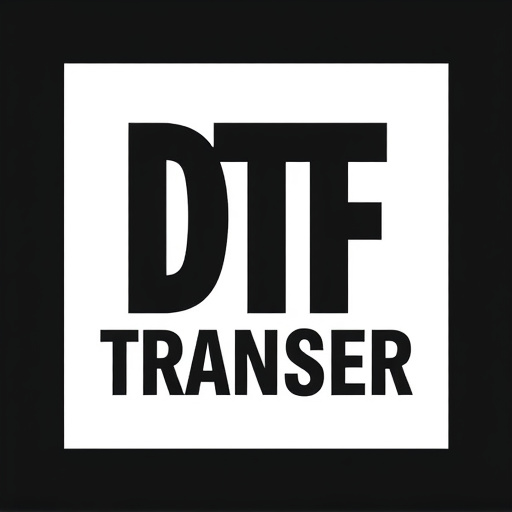
When selecting between direct-to-film (DTF) transfers and heat transfer vinyl for your business, several factors come into play. Consider your production volume and intended use. DTF transfers excel in high-volume printing, offering fast turnaround times and consistent quality. This method is ideal for large orders or creating multiple identical designs. On the other hand, heat transfer vinyl is more versatile, suitable for smaller runs or custom, one-of-a-kind pieces. It provides a broader range of application possibilities, including decorating textiles, ceramics, and even wood.
Business owners should also evaluate their budget and desired print quality. DTF printing typically involves higher upfront costs due to specialized equipment but delivers sharp details and vibrant colors, making it perfect for high-end fashion or promotional merchandise. Heat transfer vinyl offers a more affordable entry point, allowing for intricate designs with good color replication, which is excellent for items requiring detailed graphics like phone cases or custom apparel.
Case Studies: Successful Implementations of DTF Printing in Various Industries
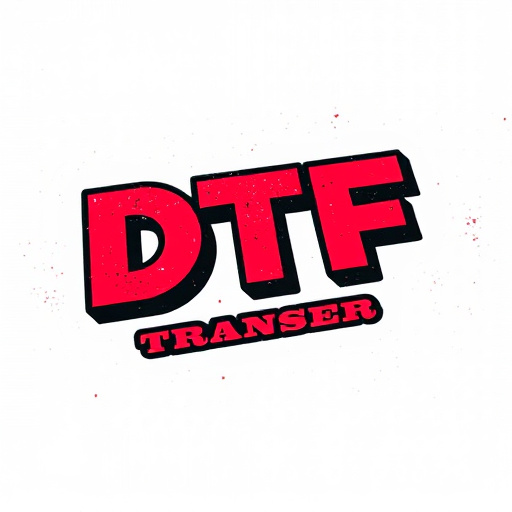
Direct-to-film (DTF) transfers have found success in a variety of industries, showcasing their versatility and effectiveness. In the apparel industry, for instance, DTF Printing has enabled small businesses to produce custom designs on demand, reducing waste and offering customers unique, personalized items. This method is particularly appealing for pop culture enthusiasts, allowing them to sport limited-edition, fan-made merchandise with intricate details previously unattainable through traditional printing methods.
Beyond fashion, DTF Transfer technology has made inroads into signage and advertising. Businesses catering to events and trade shows have embraced DTF for creating high-quality, eye-catching displays. Its ability to reproduce detailed graphics on a range of media, from plastic to metal, makes it an attractive option for companies seeking to make a bold visual impact. Moreover, DTF’s efficiency in production has led to cost savings, faster turnaround times, and increased flexibility for businesses operating in dynamic markets.
